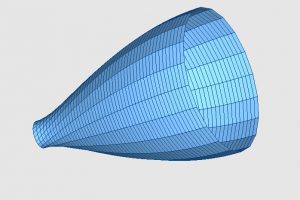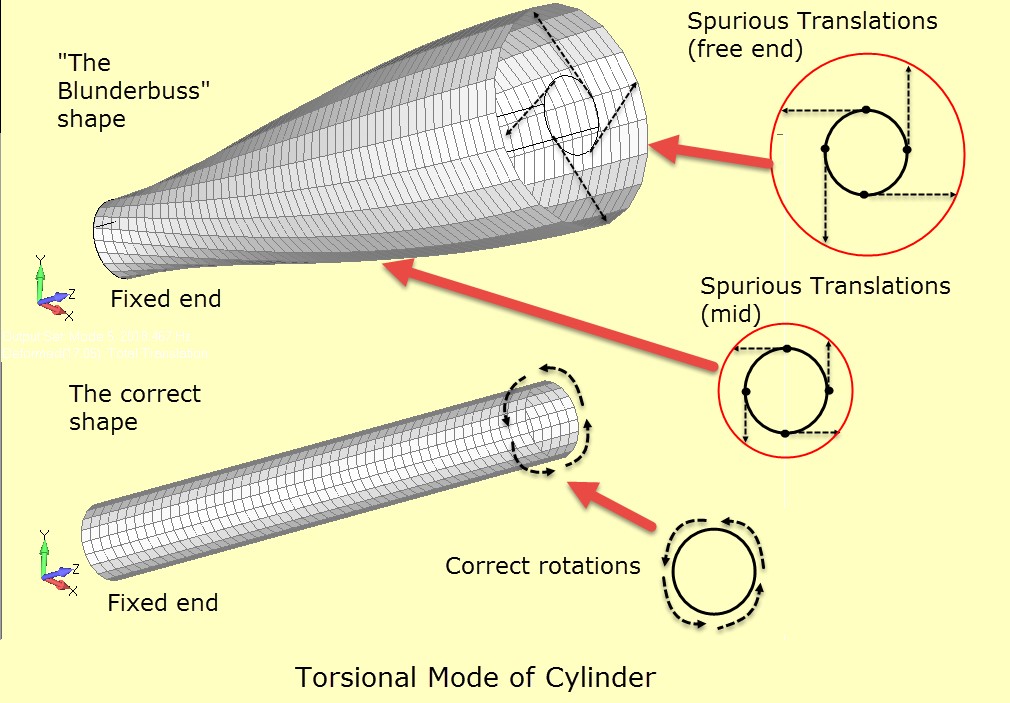The torsion mode looks strange in the postprocessor view due to a spurious graphics effect. I labeled this the ‘blunderbuss effect’ many years ago.
The figure shows a sketch of this. If a tube twists under torsion and one end is held, all post processors will show the free end dilating a maximum and then tapering back to the fixed end – looking like an old fashioned firearm.
The post-processor only considers the linear translational path when representing small displacements.
For most deformations no significant graphical distortion arises. For a pure torsional case the actual path followed is an arc.
The post processor can only plot a tangent to that arc, which gives an ever-increasing distortion effect when the displacements are magnified.
The video below shows the first 10 modes of a cylindrical tube
Mode 5 is the torsional mode – which shows this effect strongly, but take a look at the other modes – they also show the effect to a lesser or greater degree!
Video Length 2:35 minutes.
Please use the play, pause and timeline slider bar in the usual way. There may be a pause while the video buffers
Animation creates a lot of buffering – so be very patient with this video. In the worse case, just drag the timeline to speed things up.
You can navigate around the course using the sidebar


Leave a Reply